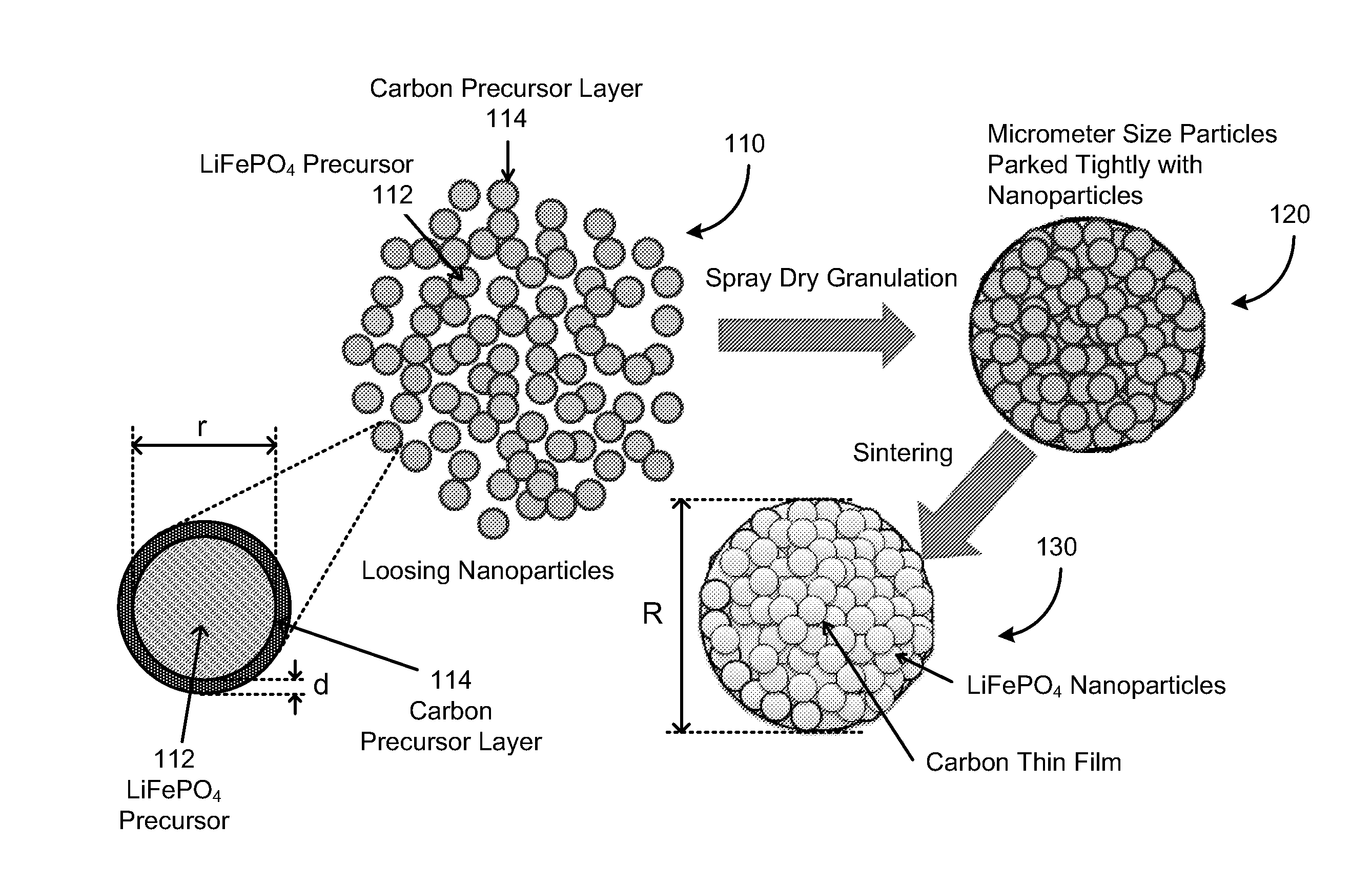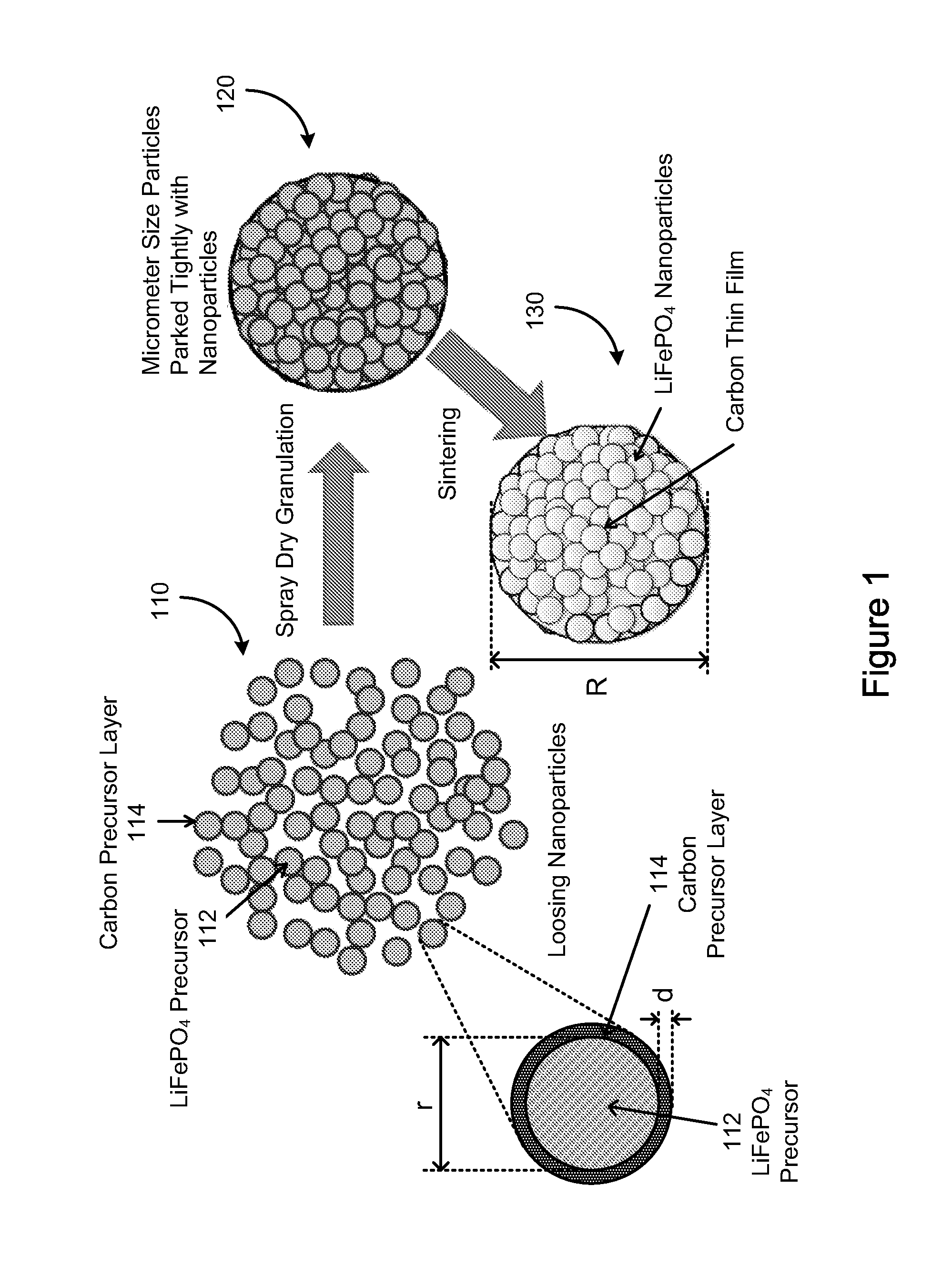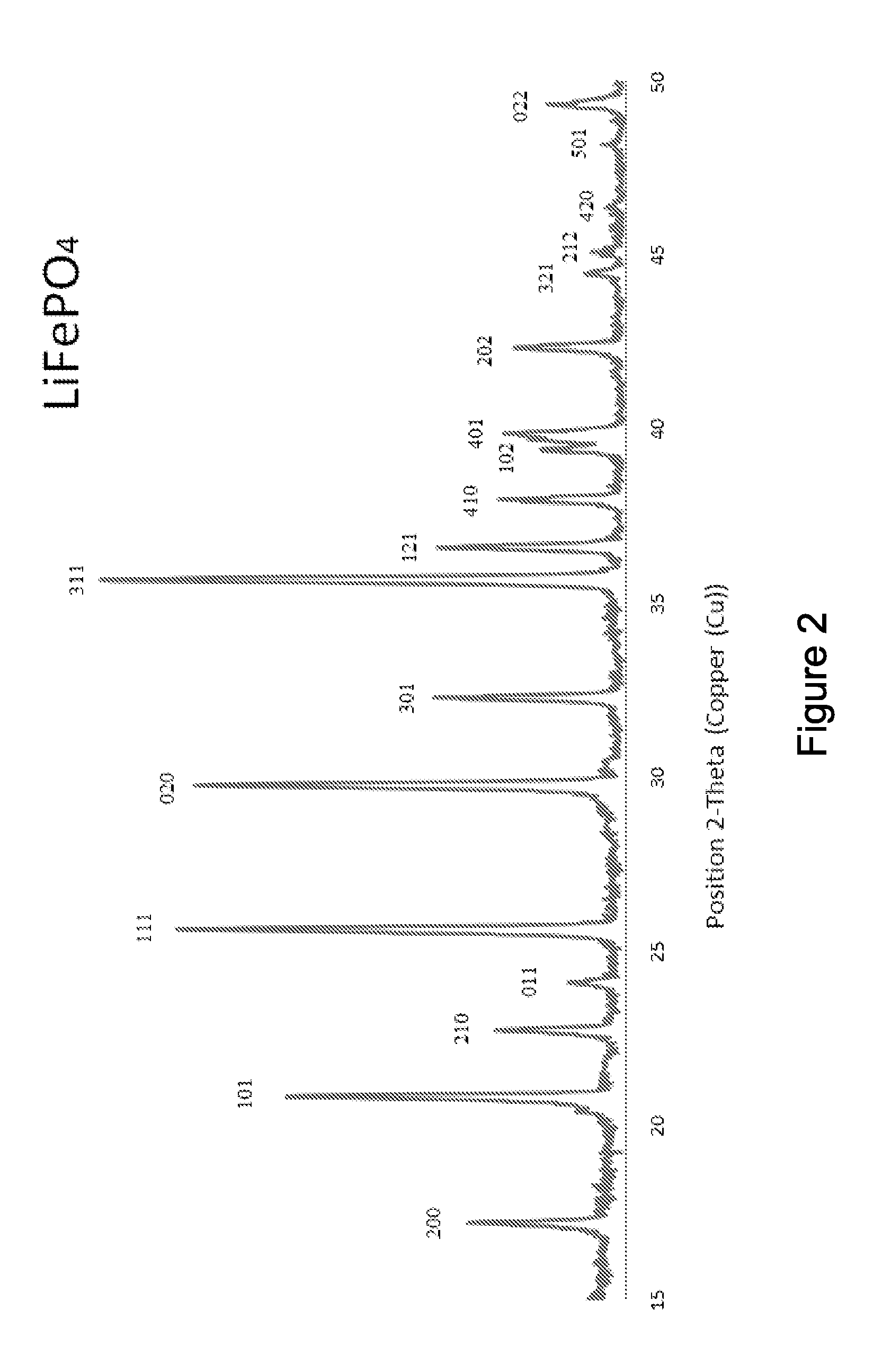Electrode active composite materials and methods of making thereof
a technology of active composite materials and electrodes, applied in the field of materials preparation, can solve the problems of limited rate capabilities of lithium metal phosphate such as lifepo/sub>4, surprise inattention to the increase of packing density,
- Summary
- Abstract
- Description
- Claims
- Application Information
AI Technical Summary
Benefits of technology
Problems solved by technology
Method used
Image
Examples
example 1
[0081]Solution A1: about 108.12 gram of ferric chloride hexahydrate was dissolved in about 200 ml of water; Solution B1: about 52.8 gram of diammonium hydrogen phosphate and about 12 ml of pyrrole were dissolved in about 500 ml of water. Solution A1 was added drop-wise into Solution B1 with stirring. The resulting mixture was stirred for about four (4) hours after finishing adding Solution A1. The resulting mixture was filtered and thoroughly rinsed with water. The resulting solid material was then dried in an oven at about 104° C. for overnight, and the dry solid material was then heated to about 300° C. under argon for about 2 hours and then cooled to the room temperature. The resulting powder was the composite of FePO4 and carbon precursor. The equivalent mole of a lithium compound, Li2CO3 and sucrose (about 15% of total solid weight) were mixed with the FePO4 composite and ball milled for about 24 hours to form a lithium iron phosphate precursor (with Li:Fe:P=1:1:1). FIGS. 3 and...
example 2
[0082]Solution A2: about 80.8 gram of Ferric nitrate nonahydrate was dissolved in about 200 ml of water; Solution B2: about 26.4 gram of diammonium hydrogen phosphate and about 4 ml of pyrrole were dissolved in about 400 ml of water. Solution A2 was added drop-wise into Solution B2 with stirring. The resulting mixture was stirred for about four (4) hours after finishing adding Solution A2. The resulting mixture was filtered and thoroughly rinsed with water. The resulting solid material was then dried in an oven at about 104° C. for overnight, and the dry solid material was then heated to about 300° C. under argon for about 2 hours and then cooled to the room temperature. The resulting powder was the composite of FePO4 and carbon precursor. The equivalent mole of a lithium compound, Li2CO3 and sucrose (15% of total solid weight) were mixed with the FePO4 composite and ball milled for about 24 hours to form a lithium iron phosphate precursor (with Li:Fe:P=1:1:1). The precursor was the...
example 3
[0083]Solution A3: about 2.7 kg of ferric chloride hexahydrate was dissolved in about 5 liter of water; Solution B3: about 1.32 kg of diammonium hydrogen phosphate and about 300 ml of pyrrole were dissolved in about 12 liter of water. Solution A3 was added drop-wise into Solution B3 with stirring in a reactor. The resulting mixture was stirred for about four (4) hours after finishing adding Solution A3. The resulting mixture was filtered and thoroughly rinsed with water. The resulting solid material was then dried in an oven at about 104° C. for overnight, and the dry solid material was then heated to about 300° C. under argon for about 2 hours and then cooled to the room temperature. The resulting powder was the composite of FePO4 and carbon precursor. The equivalent mole of a lithium compound, Li2CO3 and sucrose (about 15% of total solid weight) were mixed with the FePO4 composite in ethanol and ball-milled for about 24 hours to form a lithium iron phosphate precursor (with Li:Fe:...
PUM
| Property | Measurement | Unit |
|---|---|---|
| Temperature | aaaaa | aaaaa |
| Temperature | aaaaa | aaaaa |
| Temperature | aaaaa | aaaaa |
Abstract
Description
Claims
Application Information
 Login to View More
Login to View More - R&D
- Intellectual Property
- Life Sciences
- Materials
- Tech Scout
- Unparalleled Data Quality
- Higher Quality Content
- 60% Fewer Hallucinations
Browse by: Latest US Patents, China's latest patents, Technical Efficacy Thesaurus, Application Domain, Technology Topic, Popular Technical Reports.
© 2025 PatSnap. All rights reserved.Legal|Privacy policy|Modern Slavery Act Transparency Statement|Sitemap|About US| Contact US: help@patsnap.com



